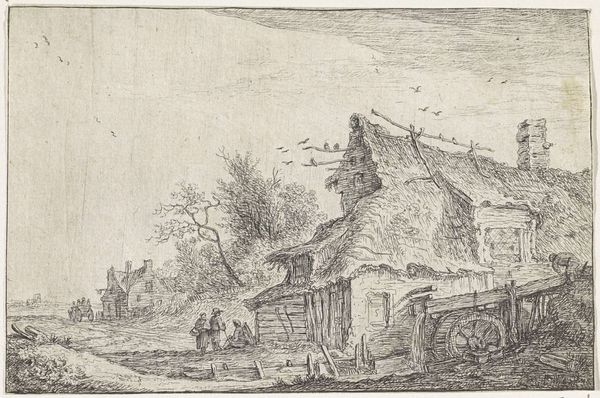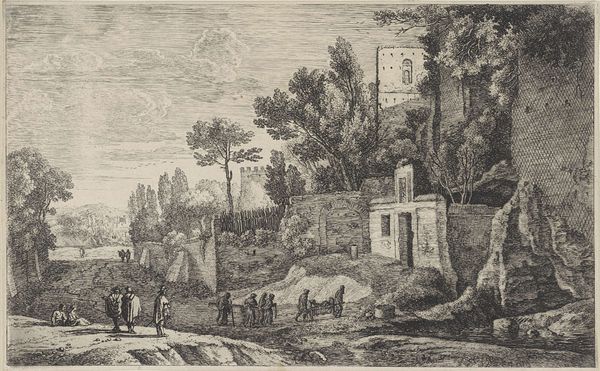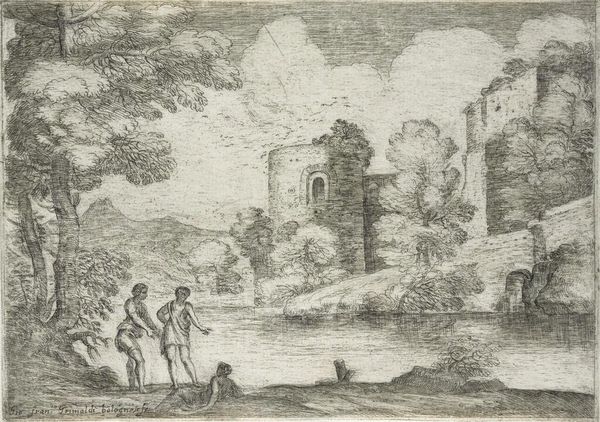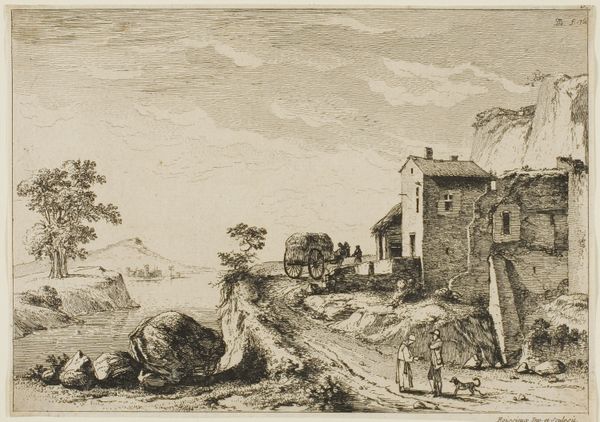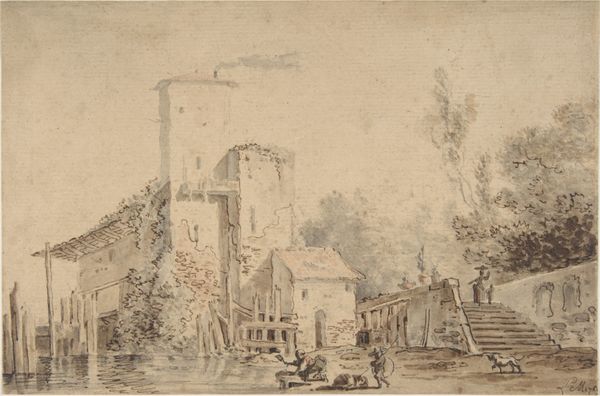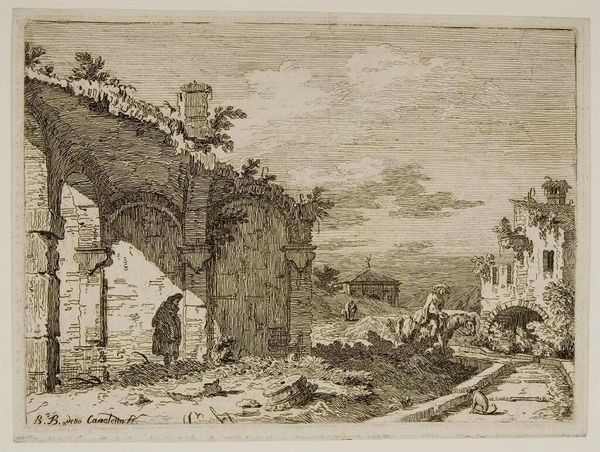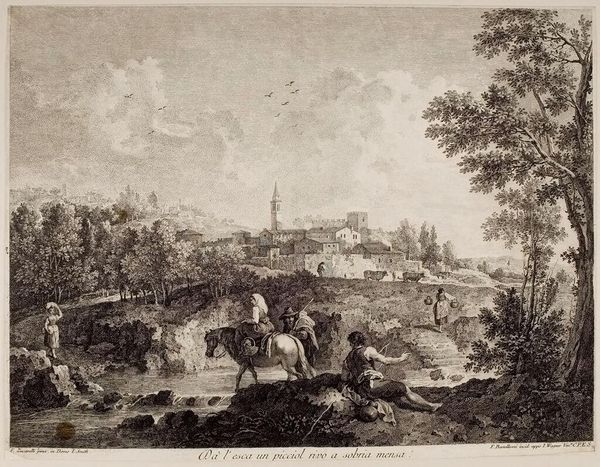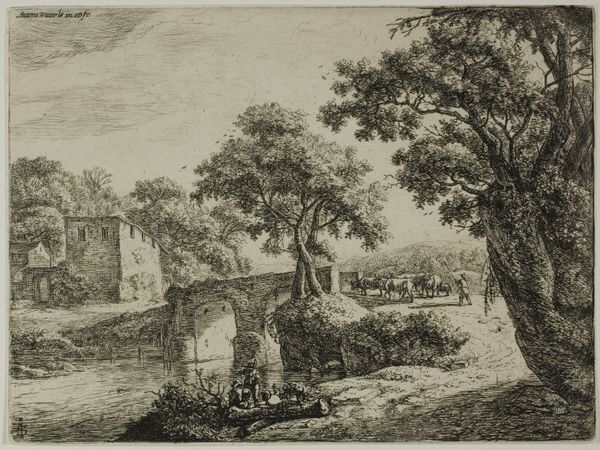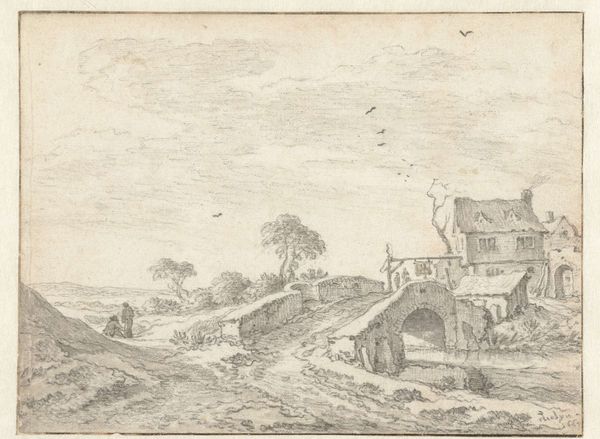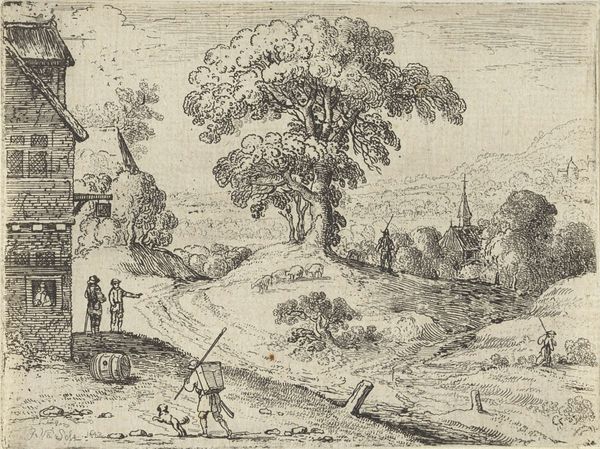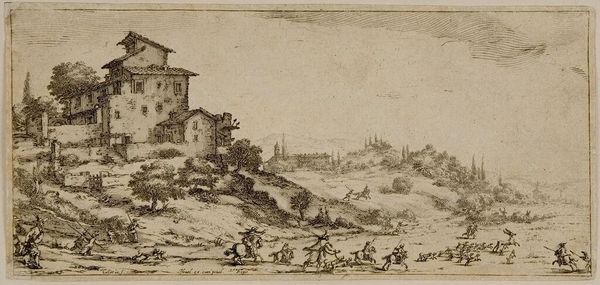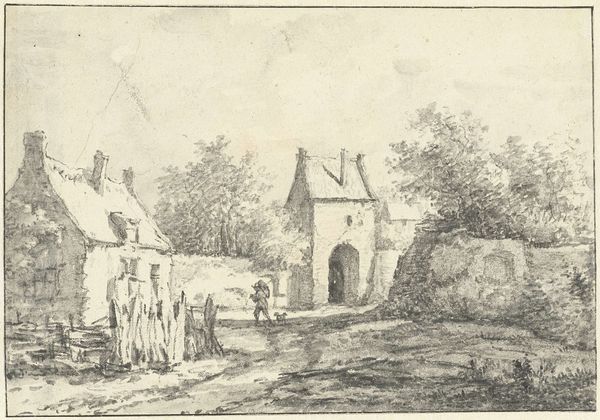
oil-paint
#
baroque
#
oil-paint
#
landscape
#
oil painting
#
genre-painting
Copyright: Public Domain: Artvee
Curator: So, here we have “Afternoon” by David Teniers the Younger. It’s an oil painting, and in terms of theme, it certainly falls into the genre painting category, with perhaps hints of landscape, too. Editor: My initial impression is rustic. It feels like the countryside—the kind of scene that unfolds slowly, like an afternoon haze. But there's an underlying earthiness here, a tangible connection to the land. I am immediately drawn to its tactile quality, and wonder how the artist constructed it. Curator: Indeed, Teniers was known for his depictions of peasant life and rural settings. Looking closer, what captures my attention is how he seems to be playing with these established genres in order to imbue the every day with dignity and the rustic with artistic sophistication, if you will. Notice the group of figures in the foreground… hunters, maybe? There is also a charming dog. The details in rendering them feel significant and almost deliberate. Editor: Right. And the materials! I'm curious about the pigments he used, the layering of the oils. Did he grind them himself? It looks like ochres, umbers, lead white... earth tones that literally came from the land he's representing. I bet a craftsman would recognise every mark he makes! How was the canvas prepared? We know about painter guilds during this era, too, so to what extent does his painting speak of workshops, of the economic exchanges underpinning art? This could offer real clues as to how labor structured these types of images during the time the image was composed. Curator: Now you’re tempting me! I see how that shapes your thinking and how such a lens might expand how the work feels. While you speak of production, I was just taken by the emotionality this creates. A sense of peace, quietude. Editor: A lot is being consumed within that quietude. Take a peek beyond aesthetics; there’s likely a dense network of extraction happening to produce a seemingly "simple" effect for the end viewer, if that is us now. These people consumed wild animals to paint those lovely brown-and-white fur pigments… Everything leaves a trace! I guess what I find so appealing about such detailed genre paintings from the Baroque period is that they force a critical viewing based around who has access, not merely some aesthetic. Curator: So for you it is really that raw feeling of “materiality” and the way that frames your view! Well, I’m taking away an even stronger feeling of the painter’s engagement, not only with those who inhabited his painting, but with our potential ability to engage. Editor: I'm going to keep wondering what materials, networks and labour are required to produce an artwork. It can transform even simple observations into historical critique and appreciation!
Comments
No comments
Be the first to comment and join the conversation on the ultimate creative platform.
